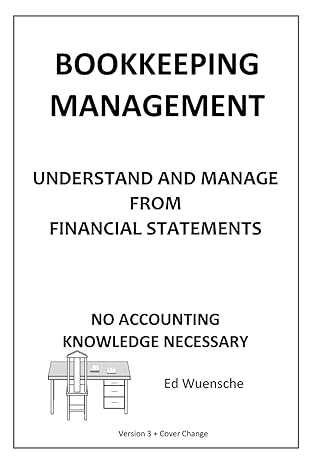Answered step by step
Verified Expert Solution
Question
1 Approved Answer
Aracel Engineering completed the following transactions in the month of June. Using the following transactions, record journal entries, create financial statements, and assess the impact

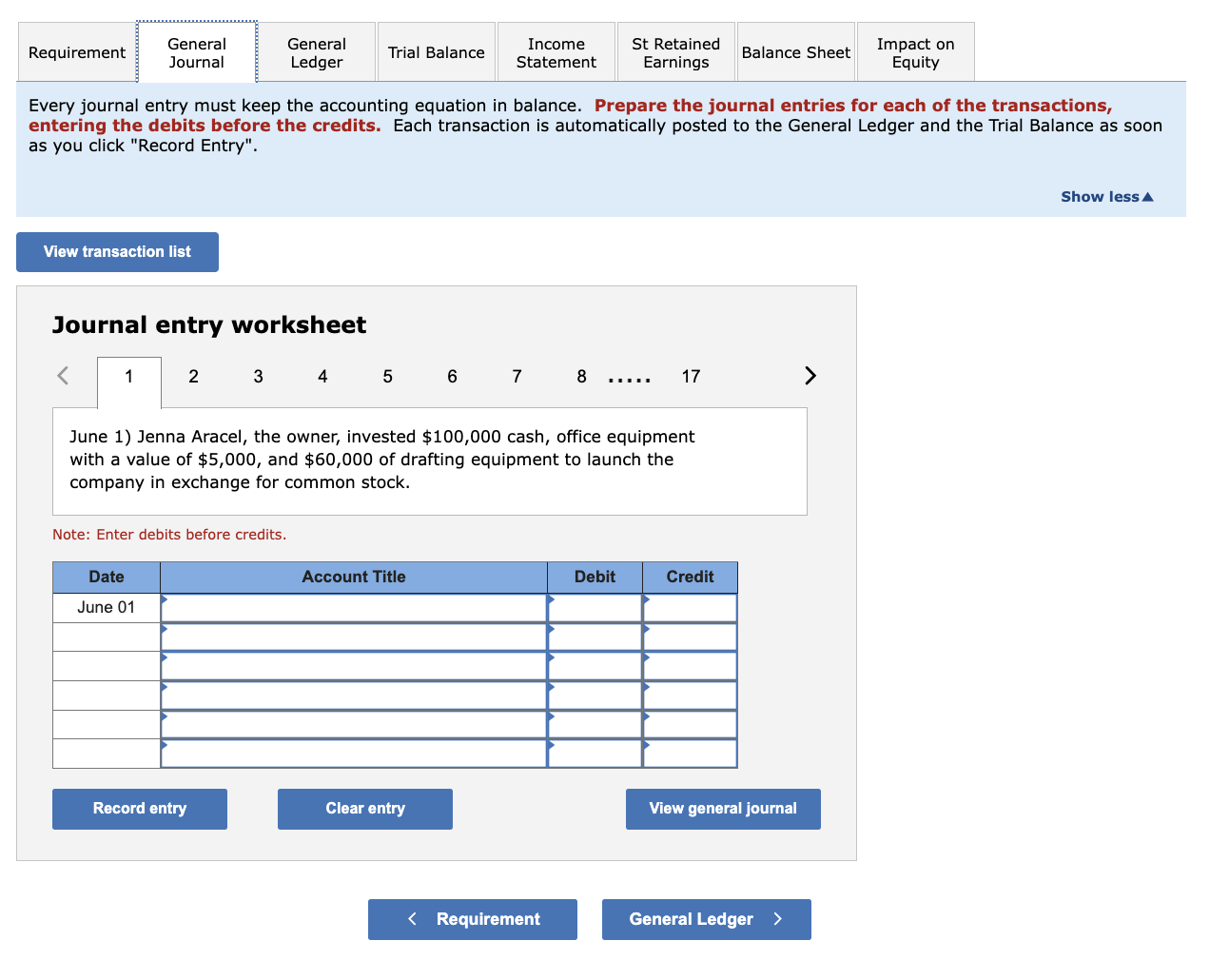
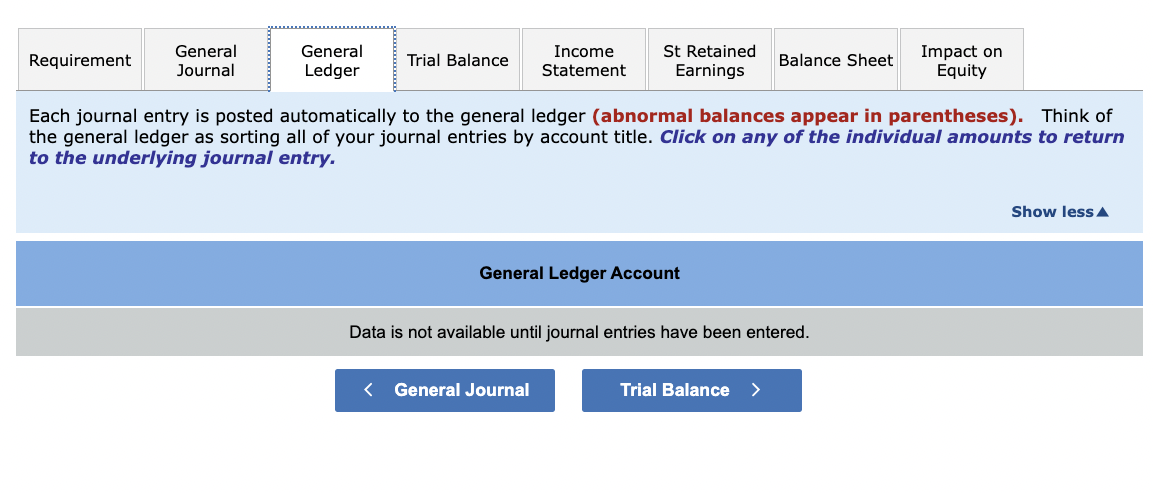
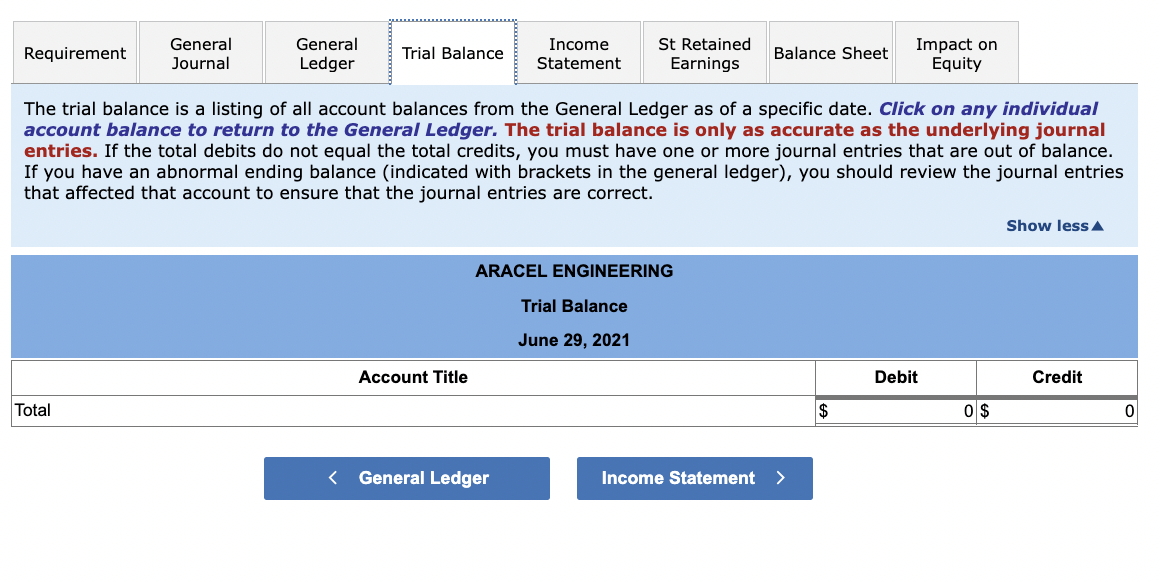
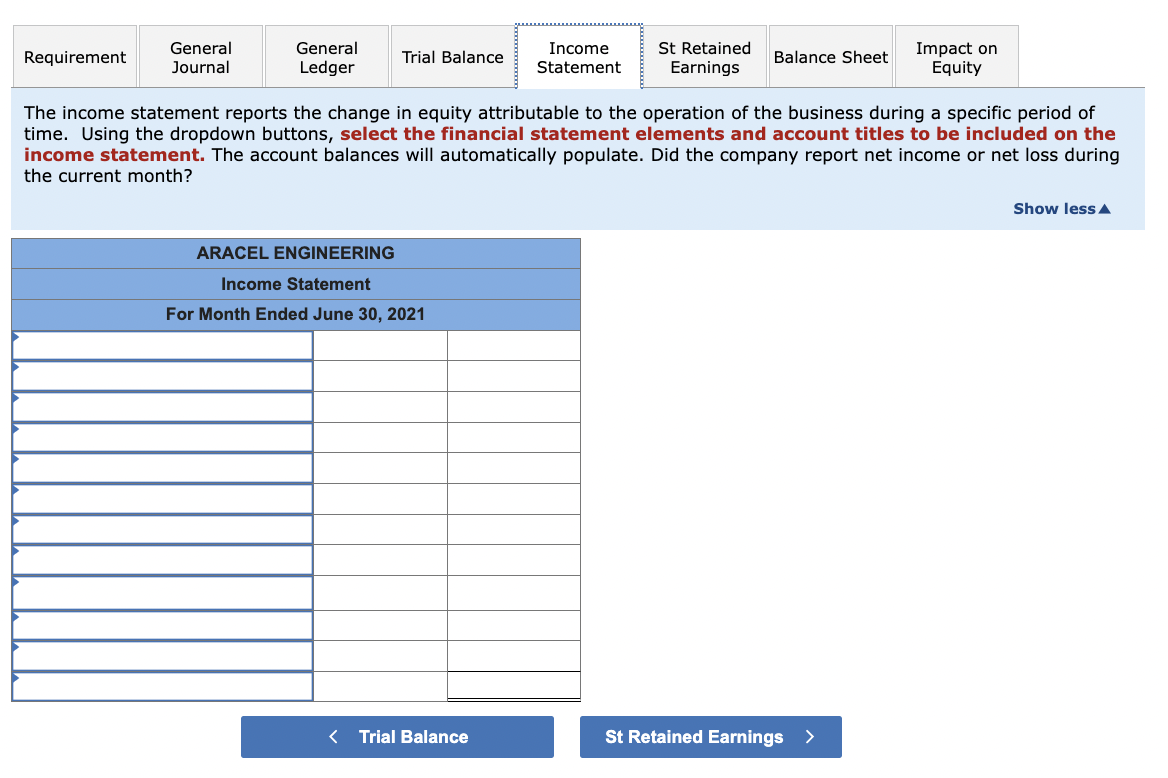
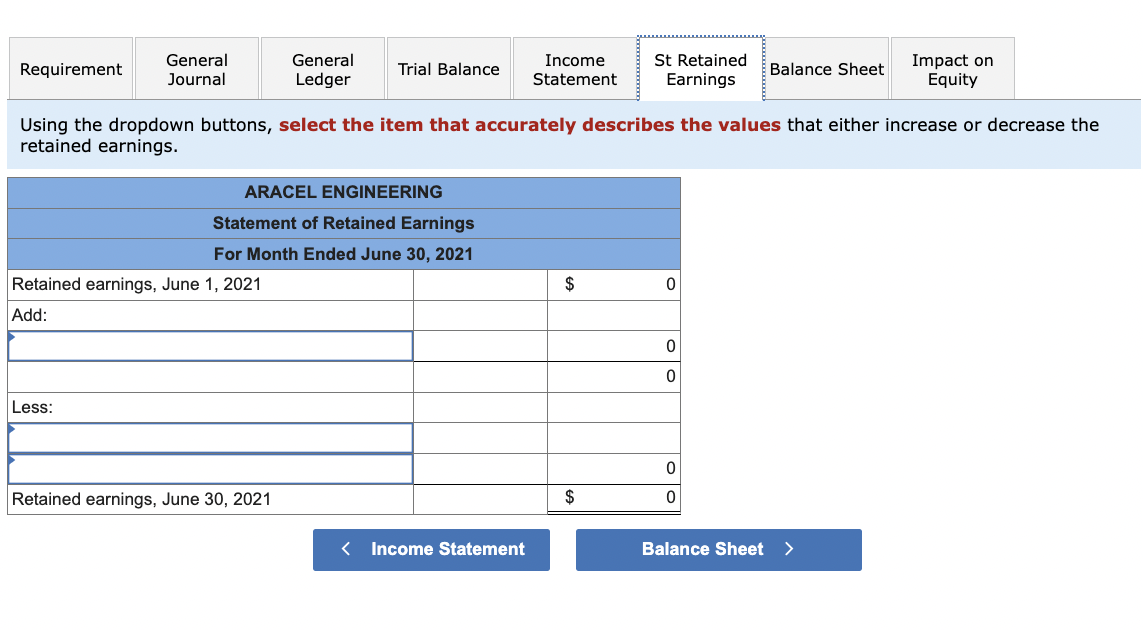
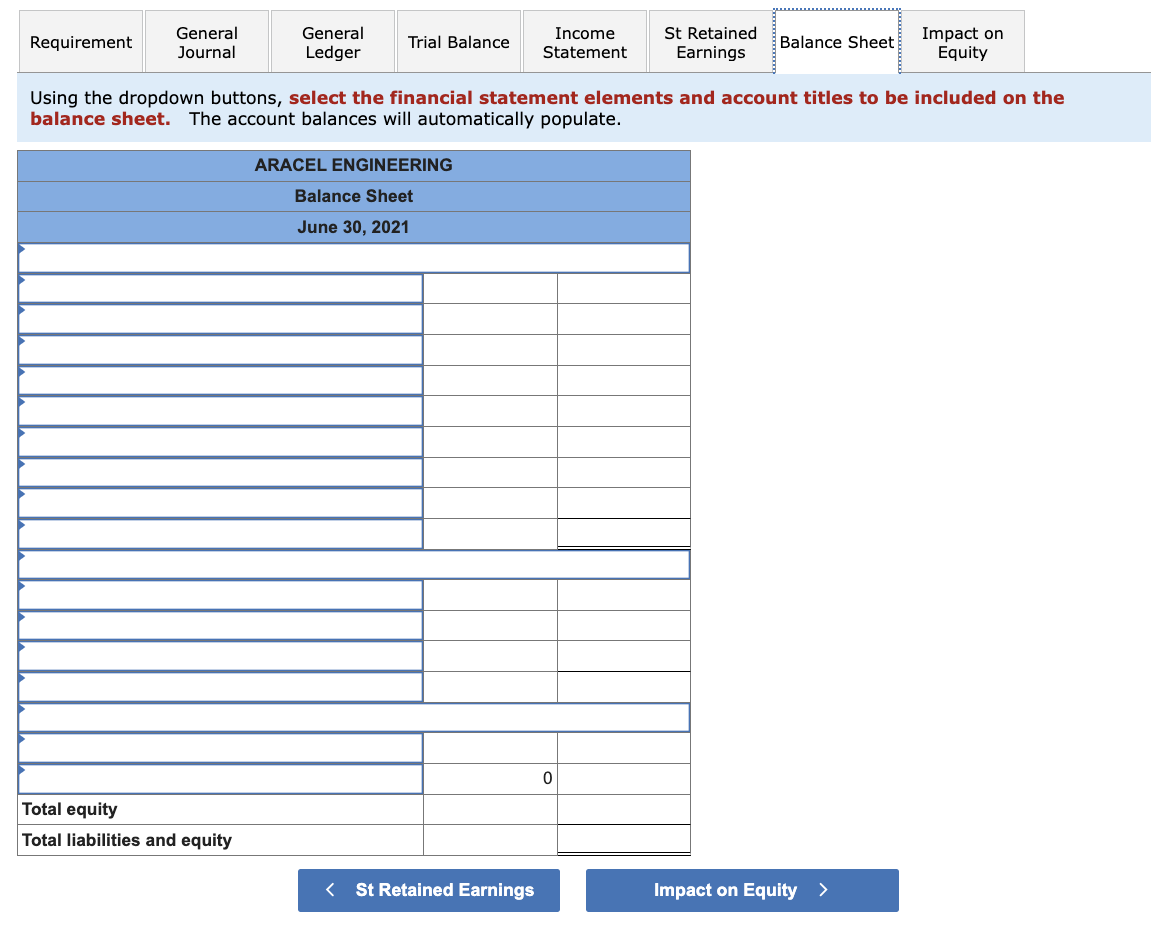
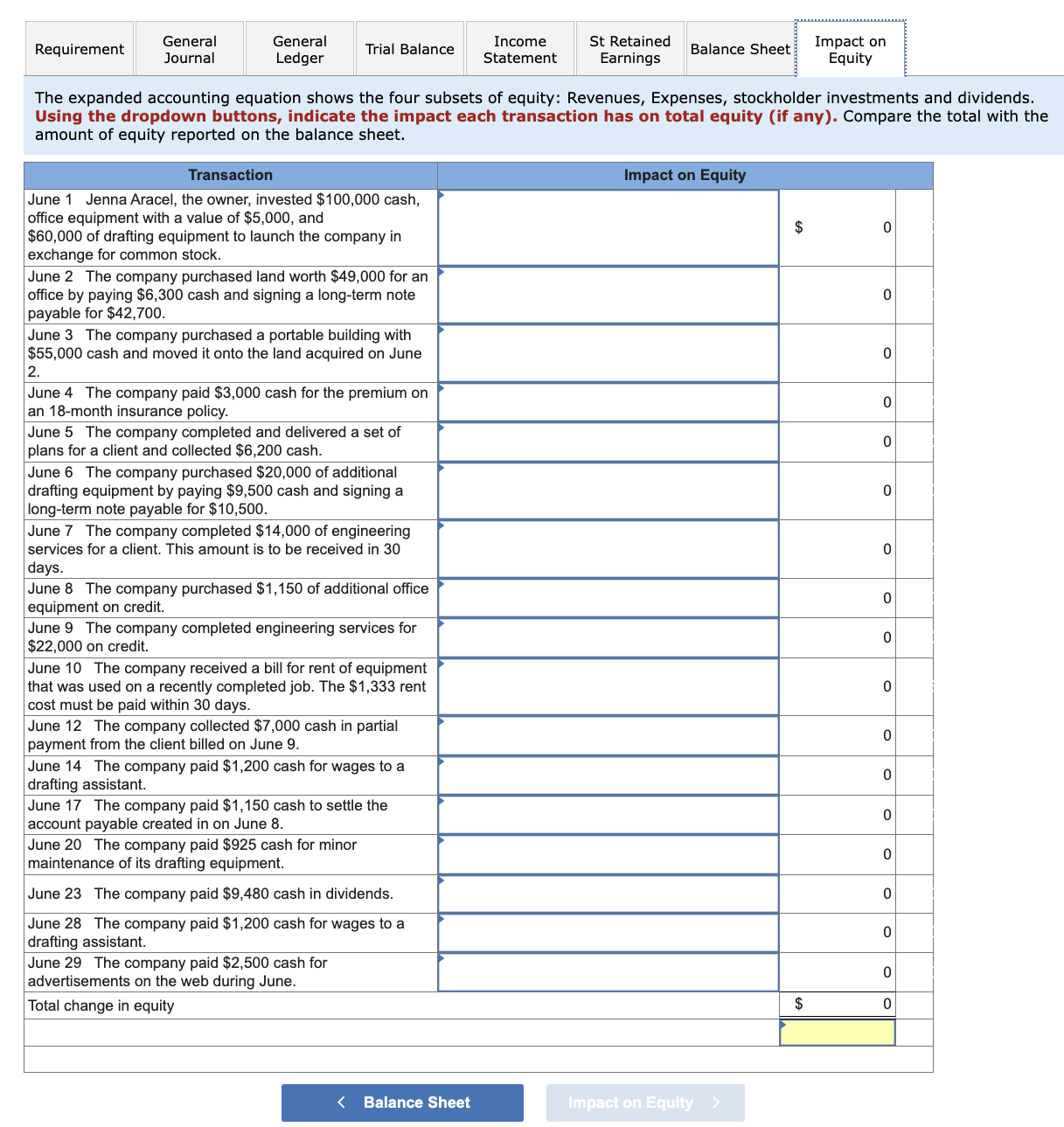 Aracel Engineering completed the following transactions in the month of June. Using the following transactions, record journal entries, create financial statements, and assess the impact of each transaction on the financial statements. June 1 Jenna Aracel, the owner, invested $100,000 cash, office equipment with a value of $5,000, and $60,000 of drafting equipment to launch the company in exchange for common stock. June 2 The company purchased land worth $49,000 for an office by paying $6,300 cash and signing a long-term note payable for $42,700. June 3 The company purchased a portable building with $55,000 cash and moved it onto the land acquired on June 2 . June 4 The company paid $3,000 cash for the premium on an 18-month insurance policy. June 5 The company completed and delivered a set of plans for a client and collected $6,200 cash. June 6 The company purchased $20,000 of additional drafting equipment by paying $9,500 cash and signing a long-term note payable for $10,500. June 7 The company completed $14,000 of engineering services for a client. This amount is to be received in 30 days. June 8 The company purchased $1,150 of additional office equipment on credit. June 9 The company completed engineering services for $22,000 on credit. June 10 The company received a bill for rent of equipment that was used on a recently completed job. The $1,333 rent cost must be paid within 30 days. June 12 The company collected $7,000 cash in partial payment from the client billed on June 9 . June 14 The company paid $1,200 cash for wages to a drafting assistant. June 17 The company paid $1,150 cash to settle the account payable created in on June 8 . June 20 The company paid $925 cash for minor maintenance of its drafting equipment. June 23 The company paid $9,480 cash in dividends. June 28 The company paid $1,200 cash for wages to a drafting assistant. June 29 The company paid $2,500 cash for advertisements on the web during June. General Journal Tab - For each transaction, prepare the required journal entry on the General Journal tab. List debits before credits. Each journal entry is automatically posted to the General Ledger. General Ledger Tab - To see the detail of all transactions that affect a specific account, or the balance in an account at a specific point in time, click on the General Ledger tab. Abnormal balances appear in parentheses. Click on any amount to see the underlying journal entry. Trial Balance Tab - A trial balance lists each account from the General Ledger, along with its balance, either a debit or a credit. Total debits should always equal total credits. If your trial balance doesn't balance, review your journal entries on the general journal tab. Income Statement Tab - Using the dropdown buttons, select the financial statement elements and account titles to be included on the income statement. The account balances will automatically populate. Statement of Retained Earnings Ta - Using the dropdown buttons, select the item that accurately describes the values that either increase or decrease the retained earnings balance. Balance Sheet Tab - Using the dropdown buttons, select the financial statement elements and account titles to be included on the balance sheet. The account balances will automatically populate. Impact on Equity Tab - Using the dropdown buttons, indicate the impact each item has on total equity. Compare the total with the amount of equity reported on the balance sheet. Every journal entry must keep the accounting equation in balance. Prepare the journal entries for each of the transactions, entering the debits before the credits. Each transaction is automatically posted to the General Ledger and the Trial Balance as soon as you click "Record Entry". Journal entry worksheet 2 5 6 7 17 > June 1) Jenna Aracel, the owner, invested $100,000 cash, office equipment with a value of $5,000, and $60,000 of drafting equipment to launch the company in exchange for common stock. Note: Enter debits before credits. Each journal entry is posted automatically to the general ledger (abnormal balances appear in parentheses). Think of the general ledger as sorting all of your journal entries by account title. Click on any of the individual amounts to return to the underlying journal entry. General Ledger Account Data is not available until journal entries have been entered. The trial balance is a listing of all account balances from the General Ledger as of a specific date. Click on any individual account balance to return to the General Ledger. The trial balance is only as accurate as the underlying journal entries. If the total debits do not equal the total credits, you must have one or more journal entries that are out of balance. If you have an abnormal ending balance (indicated with brackets in the general ledger), you should review the journal entries that affected that account to ensure that the journal entries are correct. The income statement reports the change in equity attributable to the operation of the business during a specific period of time. Using the dropdown buttons, select the financial statement elements and account titles to be included on the income statement. The account balances will automatically populate. Did the company report net income or net loss during the current month? sing the dropdown buttons, select the item that accurately describes the values that either increase or decrease the etained earnings. Using the dropdown buttons, select the financial statement elements and account titles to be included on the balance sheet. The account balances will automatically populate. The expanded accounting equation shows the four subsets of equity: Revenues, Expenses, stockholder investments and dividends. Using the dropdown buttons, indicate the impact each transaction has on total equity (if any). Compare the total with th amount of equity reported on the balance sheet
Aracel Engineering completed the following transactions in the month of June. Using the following transactions, record journal entries, create financial statements, and assess the impact of each transaction on the financial statements. June 1 Jenna Aracel, the owner, invested $100,000 cash, office equipment with a value of $5,000, and $60,000 of drafting equipment to launch the company in exchange for common stock. June 2 The company purchased land worth $49,000 for an office by paying $6,300 cash and signing a long-term note payable for $42,700. June 3 The company purchased a portable building with $55,000 cash and moved it onto the land acquired on June 2 . June 4 The company paid $3,000 cash for the premium on an 18-month insurance policy. June 5 The company completed and delivered a set of plans for a client and collected $6,200 cash. June 6 The company purchased $20,000 of additional drafting equipment by paying $9,500 cash and signing a long-term note payable for $10,500. June 7 The company completed $14,000 of engineering services for a client. This amount is to be received in 30 days. June 8 The company purchased $1,150 of additional office equipment on credit. June 9 The company completed engineering services for $22,000 on credit. June 10 The company received a bill for rent of equipment that was used on a recently completed job. The $1,333 rent cost must be paid within 30 days. June 12 The company collected $7,000 cash in partial payment from the client billed on June 9 . June 14 The company paid $1,200 cash for wages to a drafting assistant. June 17 The company paid $1,150 cash to settle the account payable created in on June 8 . June 20 The company paid $925 cash for minor maintenance of its drafting equipment. June 23 The company paid $9,480 cash in dividends. June 28 The company paid $1,200 cash for wages to a drafting assistant. June 29 The company paid $2,500 cash for advertisements on the web during June. General Journal Tab - For each transaction, prepare the required journal entry on the General Journal tab. List debits before credits. Each journal entry is automatically posted to the General Ledger. General Ledger Tab - To see the detail of all transactions that affect a specific account, or the balance in an account at a specific point in time, click on the General Ledger tab. Abnormal balances appear in parentheses. Click on any amount to see the underlying journal entry. Trial Balance Tab - A trial balance lists each account from the General Ledger, along with its balance, either a debit or a credit. Total debits should always equal total credits. If your trial balance doesn't balance, review your journal entries on the general journal tab. Income Statement Tab - Using the dropdown buttons, select the financial statement elements and account titles to be included on the income statement. The account balances will automatically populate. Statement of Retained Earnings Ta - Using the dropdown buttons, select the item that accurately describes the values that either increase or decrease the retained earnings balance. Balance Sheet Tab - Using the dropdown buttons, select the financial statement elements and account titles to be included on the balance sheet. The account balances will automatically populate. Impact on Equity Tab - Using the dropdown buttons, indicate the impact each item has on total equity. Compare the total with the amount of equity reported on the balance sheet. Every journal entry must keep the accounting equation in balance. Prepare the journal entries for each of the transactions, entering the debits before the credits. Each transaction is automatically posted to the General Ledger and the Trial Balance as soon as you click "Record Entry". Journal entry worksheet 2 5 6 7 17 > June 1) Jenna Aracel, the owner, invested $100,000 cash, office equipment with a value of $5,000, and $60,000 of drafting equipment to launch the company in exchange for common stock. Note: Enter debits before credits. Each journal entry is posted automatically to the general ledger (abnormal balances appear in parentheses). Think of the general ledger as sorting all of your journal entries by account title. Click on any of the individual amounts to return to the underlying journal entry. General Ledger Account Data is not available until journal entries have been entered. The trial balance is a listing of all account balances from the General Ledger as of a specific date. Click on any individual account balance to return to the General Ledger. The trial balance is only as accurate as the underlying journal entries. If the total debits do not equal the total credits, you must have one or more journal entries that are out of balance. If you have an abnormal ending balance (indicated with brackets in the general ledger), you should review the journal entries that affected that account to ensure that the journal entries are correct. The income statement reports the change in equity attributable to the operation of the business during a specific period of time. Using the dropdown buttons, select the financial statement elements and account titles to be included on the income statement. The account balances will automatically populate. Did the company report net income or net loss during the current month? sing the dropdown buttons, select the item that accurately describes the values that either increase or decrease the etained earnings. Using the dropdown buttons, select the financial statement elements and account titles to be included on the balance sheet. The account balances will automatically populate. The expanded accounting equation shows the four subsets of equity: Revenues, Expenses, stockholder investments and dividends. Using the dropdown buttons, indicate the impact each transaction has on total equity (if any). Compare the total with th amount of equity reported on the balance sheet Step by Step Solution
There are 3 Steps involved in it
Step: 1

Get Instant Access to Expert-Tailored Solutions
See step-by-step solutions with expert insights and AI powered tools for academic success
Step: 2

Step: 3

Ace Your Homework with AI
Get the answers you need in no time with our AI-driven, step-by-step assistance
Get Started


